
A sarong or a sarung is a large tube or length of fabric, often wrapped around the waist, worn in Southeast Asia, South Asia, Western Asia, Northern Africa, East Africa, West Africa, and on many Pacific islands. The fabric often has woven plaid or checkered patterns, or may be brightly colored by means of batik or ikat dyeing. Many modern sarongs have printed designs, often depicting animals or plants. Different types of sarongs are worn in different places in the world, notably the lungi in the Indian subcontinent and the izaar in the Arabian Peninsula.

The lungi is a type of sarong that originated in the Bengal, Indian subcontinent. The lungi, which usually multicoloured, is a men's skirt usually tied around the lower waist below the navel. it can be worn as casual wear and night wear, in places and climates where the heat and humidity increase sweating, and make it unpleasant or uncomfortable to wear closed and tight clothes such as trousers.

A lavalava, sometime written as lava-lava, also known as an 'ie, short for 'ie lavalava, is an article of daily clothing traditionally worn by Polynesians and other Oceanic peoples. It consists of a single rectangular cloth worn similarly to a wraparound skirt or kilt. The term lavalava is both singular and plural in the Samoan language.
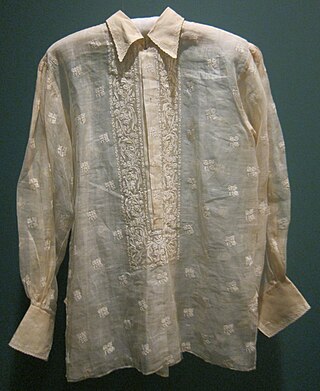
The barong tagalog, more commonly known simply as barong, is an embroidered long-sleeved formal shirt for men and a national dress of the Philippines. Barong tagalog combines elements from both the precolonial native Filipino and colonial Spanish clothing styles. It is traditionally made with sheer textiles (nipis) woven from piña or abacá; although in modern times, cheaper materials like organza silk, ramie or polyester are also used.

A longyi is a sheet of cloth widely worn in Myanmar (Burma). It is approximately 2 metres (6.6 ft) long and 80 centimetres (2.6 ft) wide. The cloth is often sewn into a cylindrical shape. It is worn around the waist, running to the feet, and held in place by folding fabric over without a knot. In ancient times, Lethwei fighters would hitch it up to compete. This folding technique is still being used in modern days when people play chinlone.
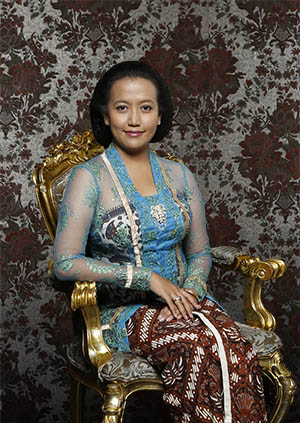
A kebaya is an upper garment traditionally worn by women in Southeast Asia, notably in Brunei, Indonesia, Malaysia, Singapore and Southern Thailand. It is also worn in parts of southern Philippines and Cambodia.
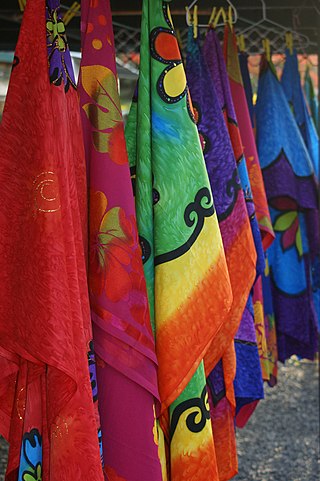
A pāreu or pareo is a wraparound skirt worn on Tahiti or other Pacific islands. The term was originally used only for women's skirts, as men wore a loincloth, called a maro. Nowadays the term is used for any cloth worn wrapped around the body by men and women.

Piña is a traditional Philippine fiber made from the leaves of the pineapple plant. Pineapples are indigenous to South America but have been widely cultivated in the Philippines since the 17th century, and used for weaving lustrous lace-like luxury textiles known as nipis fabric. The name is derived from Spanish piña, meaning "pineapple".
Maya textiles (k’apak) are the clothing and other textile arts of the Maya peoples, indigenous peoples of the Yucatán Peninsula in Mexico, Guatemala, Honduras, El Salvador and Belize. Women have traditionally created textiles in Maya society, and textiles were a significant form of ancient Maya art and religious beliefs. They were considered a prestige good that would distinguish the commoners from the elite. According to Brumfiel, some of the earliest weaving found in Mesoamerica can date back to around 1000-800 B.C.E.
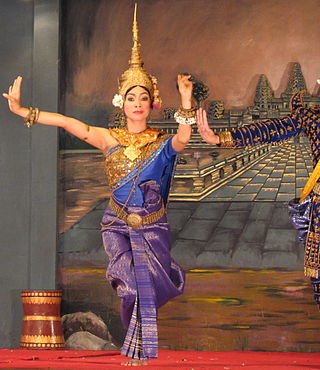
A sampot, a long, rectangular cloth worn around the lower body, is a traditional dress in Cambodia. It can be draped and folded in several different ways. The traditional dress is similar to the dhoti of Southern Asia. It is also worn in the neighboring countries of Laos and Thailand where it is known as pha nung.

The baro’t saya or baro at saya is a traditional dress ensemble worn by women in the Philippines. It is a national dress of the Philippines and combines elements from both the precolonial native Filipino and colonial Spanish clothing styles. It traditionally consists of four parts: a blouse, a long skirt, a kerchief worn over the shoulders, and a short rectangular cloth worn over the skirt.

Khmer traditional clothing refers to the traditional styles of dress worn by the Khmer people from ancient times to the present.
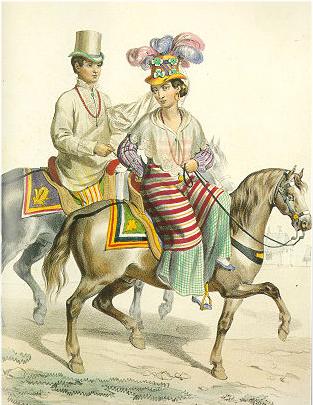
Tapis across various cultures in the Philippines may generally refer to a single, rectangular piece of cloth one wraps around oneself as clothing, but is also the term for a colorful, hand-woven wraparound skirt common in the pre-colonial period, and which is still used today as part of the María Clara gown and by culturally conservative tribes.

Tapis is a traditional Tenun style and also refers to resulting cloth that originated from Lampung, Indonesia. It consists of a striped, naturally-coloured cloth embroidered with warped and couched gold thread. Traditionally using floral motifs, it has numerous variations. It is generally worn ceremonially, although it can be used as a decoration. It is considered one of the symbols of Lampung and Lampungese.

The María Clara gown, historically known as the traje de mestiza during the Spanish colonial era, is a type of traditional dress worn by women in the Philippines. It is an aristocratic version of the baro't saya. It takes its name from María Clara, the mestiza protagonist of the novel Noli Me Tángere, penned in 1887 by Filipino nationalist José Rizal. It is traditionally made out of piña, the same material used for the barong tagalog.

The national costume of Indonesia is the national attire that represents the Republic of Indonesia. It is derived from Indonesian culture and Indonesian traditional textile traditions. Today the most widely recognized Indonesian national attires include batik and kebaya, although originally those attires mainly belong within the island of Java and Bali, most prominently within Javanese, Sundanese and Balinese culture. Since Java has been the political and population center of Indonesia, folk attire from the island has become elevated into national status.

The Sinh, or commonly, is a handmade traditional skirt, often made of silk, that are worn by Lao women and Thai women, particularly northern Thai and northeastern Thai women. It is a tube skirt. Its pattern can indicate which region the wearer is from. In present-day Thailand, pha sins are typically worn at special events. However, in Laos, Sinhs are worn more regularly in daily life.

Fashion and clothing in the Philippines refers to the way the people of the Philippine society generally dress up at home, at work, travelling and during special occasions.
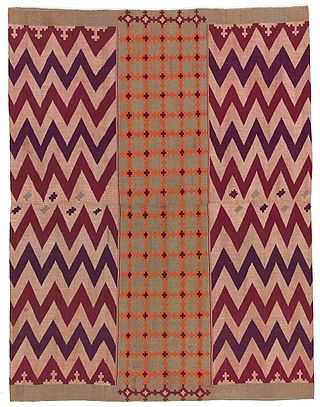
The patadyong, is an indigenous Philippine rectangular or tube-like wraparound skirt worn by both men and women of the Visayas islands and the Sulu Archipelago, similar to the Malong, or Sarong. It was also historically worn in parts of Luzon like Pampanga and Sorsogon.
Clothing in Myanmar varies depending on the ethnicity, geography, climate and cultural traditions of the people of each region of Myanmar (Burma). The most widely recognized Burmese national costume is the longyi, which is worn by both males and females nationwide. Burmese clothing also features great diversity in terms of textiles, weaves, fibers, colours and materials, including velvet, silk, lace, muslin, and cotton.




















